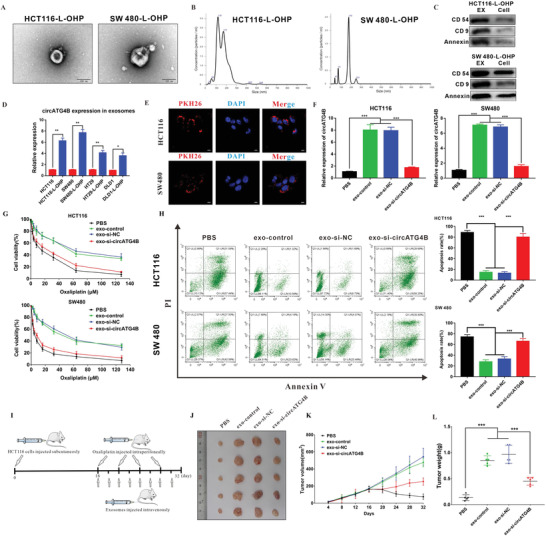Figure 2.

CircATG4B transferred by an exosomal manner induces oxaliplatin resistance. A) Exosomes were isolated from the supernatant of the culture medium of HCT116‐L‐OHP and SW480‐L‐OHP cells, and the morphology and size were confirmed by transmission electron microscopy. Scale bars, 100 nm. B) NTA distribution of CRC cell‐derived exosomes. C) CRC cell‐derived exosomes were analyzed by Western blotting using anti‐CD54, anti‐CD9, and anti‐Annexin antibodies. Cellular lysates were used as positive loading controls. D) The circATG4B expression of the chemoresistant‐CRC exosome was significantly higher than the exosome of parental CRC cells. E) PKH26‐labeled CRC‐L‐OHP exosomes could fuse into CRC cells. Scale bars, 10 µm. F) qRT‐PCR quantification of circATG4B with the treatment of diverse CRC‐L‐OHP exosomes in CRC cells. G) CCK‐8 detection of cell viability by oxaliplatin in CRC cells treated with diverse CRC‐L‐OHP exosomes. H) Flow cytometry analysis of cell apoptosis by oxaliplatin in CRC cells treated with diverse CRC‐L‐OHP exosomes. I) A flow chart depicting the in vivo experimental design. J) The tumor of different groups treated with oxaliplatin. K) Tumor grow rates are showed in different groups. L) Tumor weights were monitored in different groups. *p < 0.05, **p < 0.01, ***p < 0.001.
